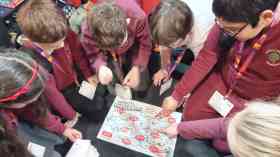In November 2020 I was told I had 6 months left to live and was at risk of sudden death, due to a colloid cyst in my brain.
Supplier Focus
Latest Supplier News
Borg & Overström is a UK manufacturer of premium drinking water solutions. For over 20 years Borg & Overström has developed sustainable, bottle-less, hygienic, drinking water dispensers with the aim to provide exceptional, safe, self-service drinking water into schools, universities, workplaces and communal spaces.

 Slips, trips and falls at work are collectively the single most common cause of injury in UK workplaces. Health and Safety Executive (HSE) stats for Great Britain for 2012/13 show that there were an estimated 5.2 million working days lost due to workplace injury, and many of those will be slips, trips and falls.
Slips, trips and falls at work are collectively the single most common cause of injury in UK workplaces. Health and Safety Executive (HSE) stats for Great Britain for 2012/13 show that there were an estimated 5.2 million working days lost due to workplace injury, and many of those will be slips, trips and falls.








